Do you send identical “newsletters” and campaigns to all your customers? Then I will let you in on a much more efficient way of boosting your sales by retaining customers with personalized e-mails.
Personalized e-mails
One of the most efficient ways to retain customers is to send them personalized e-mails with relevant products that match each customer’s specific behavior and needs at the right point in time.
Know your customer’s life cycle
When you know the customer’s purchase history, you can compare her to other similar customers, which is the foundation for real personalization:
Based on this knowledge, you can map the customer’s life cycle, which enables you to predict what the customer will most likely buy in the future, and when. In the personalization industry, this is known as “Prediction“.
Today’s personalization engines are very good at predicting the customer’s shopping behavior, as they are based on machine learning and “artificial intelligence”. This makes these engines much better at e-mail marketing than even skilled marketers.
Predict customer behavior
Let’s look at how these engines work in general and how you can use them to facilitate personalized e-mails via a customer named “Lisa”.
The personalization engines compare Lisa’s behavior to similar customers by investigating when they buy a product, search for products, add products to a Wish List, visits the online shop without buying any products, etc.
Based on this knowledge, the technology can predict which products Lisa will most likely buy and when, which will trigger a personalized e-mail:
Amazon utilizes best-practice personalization
Since Amazon is one of the best in the world at sending personalized e-mails, I will use them as an example to illustrate some of the e-mails you can send to your customers.
Browsing without buying
In this example, Lisa has been browsing Amazon for denim products without buying any:
Based on this knowledge, Amazon sends this personalized e-mail to Lisa with the denim products she is most likely to buy. To trigger her attention, the e-mail title is: “Top Jeans, Denim Shirts + more“, which increases the e-mail opening rate.
If Amazon inserted a more generic header instead, such as: “Products for you”, the e-mail opening rate would be significantly lower.
Additionally, Amazon has inserted a micro-navigation for “Women“, “Men“, “Girls” and “Boys” that the customer can press if she’s not interested in any of the product matches. This is a simple tactic you can use in all kinds of e-mails.
If the customer taps the “Tops” image for example, she enters the Amazon online shop where she can easily filter her personalized Denim products:
Focus on relevance, not deals
The above example focuses on providing the customer with relevant products at the relevant point of time of her customer life cycle without being deal-oriented. This is very interesting from a business point of view, as you of course will make more money on selling products that are not on sale.
If Amazon fails in selling non-discounted products based on relevance only however, they then try to sell discounted products. In this case, the customer entered Amazon’s online shop on May 29th, and didn’t buy anything.
14 days later, he receives this e-mail with a wide range of Levi’s products at a 30% discount:
High conversion rates
Amazon sends millions of personalized e-mails like this to their clients for a very good reason — they convert very well!
Amazon’s conversion rate averages a staggering 8-12%, especially since they very intelligently carry out this type of customer retention.
Don’t spam your customers
Today it is very expensive to atttract a new customer based on Google Ads, Facebook campaigns, etc. — a new customer acquisition cost may easily be USD 100 or more.
So once you’ve converted one of these expensive visitors into a customer, you should not spam them with one similar “newsletter” or campaigns as they most likely are off target to a majority of your customers.
Personalize e-mails
Instead, personalize your e-mails and campaigns and watch your customer retention rates climb.
Enjoy!
Btw: in most countries, you are not allowed to send personalized e-mails to customers unless they have explicitly accepted this.
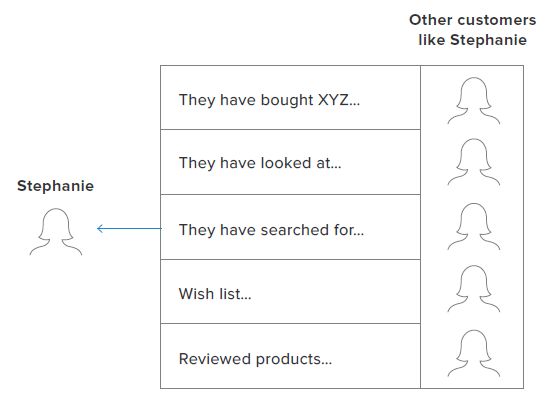
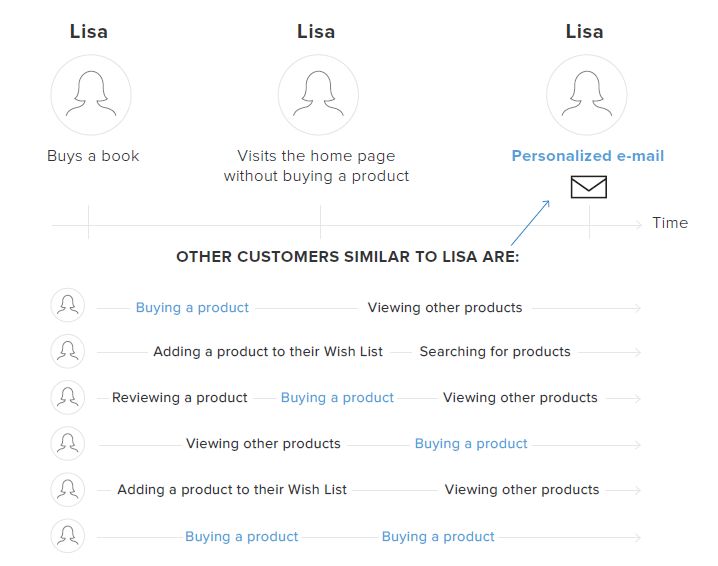
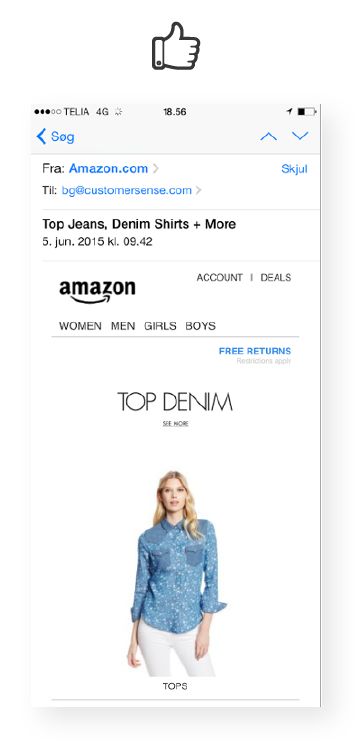
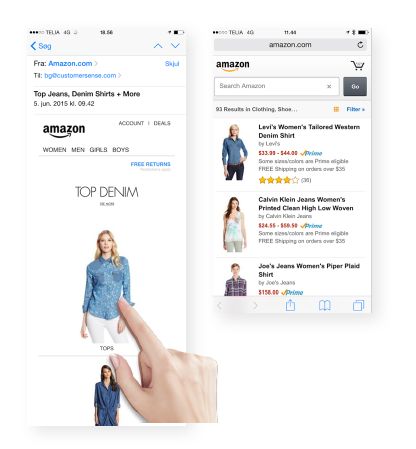
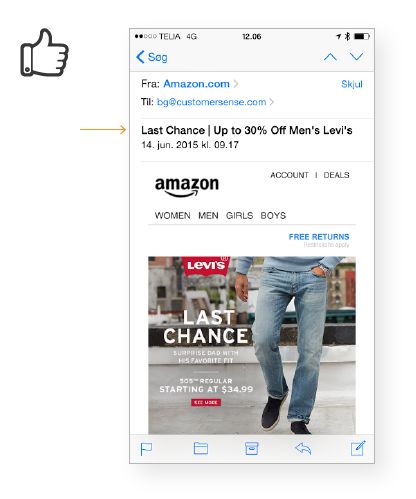
Hi, is it allowed to send personalised emails in Denmark, Norway and Sweden
Yes, if the customer has accepted this explicitly.
I recommend that a lawyer helps you create the correct terms of acceptance for this.